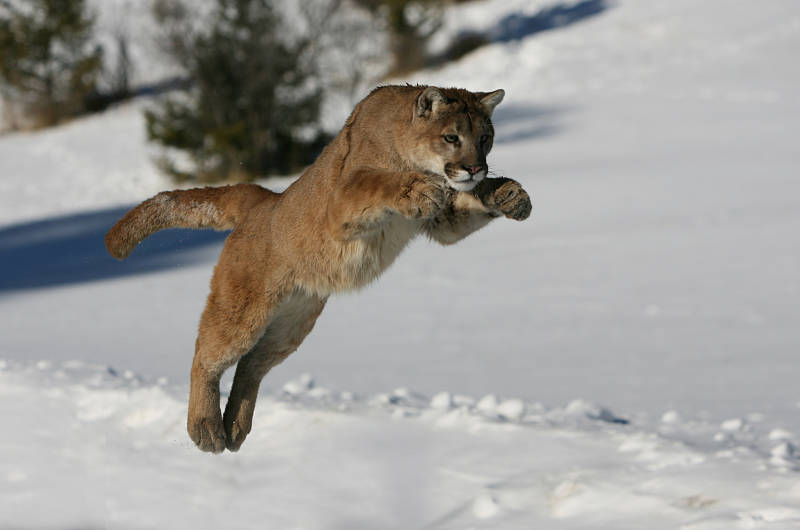Cougar Facts
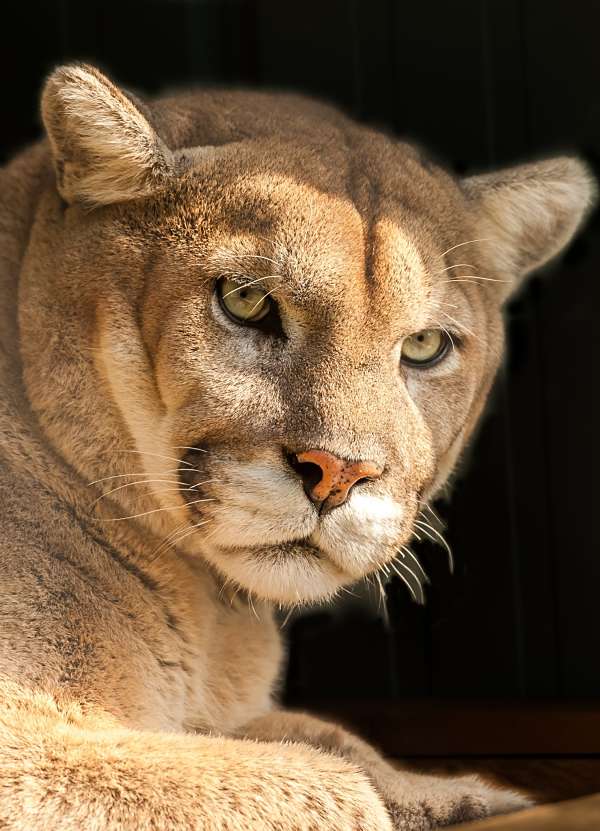 Portrait of a Cougar
Portrait of a CougarOne of the most often discussed cougar facts is that they are known by so many different names including mountain lion, puma, catamount and panther.
But all of these names refer to the same magnificent, tawny colored cat.
Averaging between 24 and 28 inches at the shoulder, with the largest males topping 260 pounds, the cougar is bigger, on average, than the African leopard.
But the cougar, commonly called mountain lion, is not considered one of the "big cats", while the smaller leopard is. Why?
Well, first because they are more closely related to smaller cat species, like bobcats and even domestic cats, than they are to the big cats, and second, because they cannot roar.
Yes, the mountain lion can growl, snarl, and even purr, but does not roar.
There are six sub-species of cougars ranging all throughout South and Central America, as well as Mexico, Western North America, and Florida.
This is a solitary, stealthy cat that is most active at dusk and dawn, and sneaks through the shadows largely undetected.
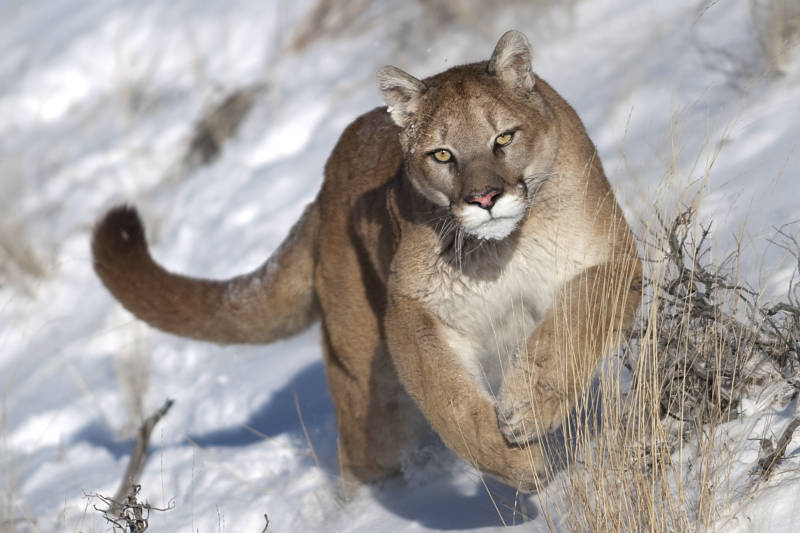
They live in many completely different habitats, from snow covered mountains, to tropical forests to swamps.
Because the places they live are so different, so too, are what cougars eat.
In the Rocky mountains of the Western United States, where they are called "mountain lions", their diet is mule deer, elk, moose and rocky mountain goats.
In the jungles of South America where they are called "pumas", they dine on wild boar and monkeys.
In the swamps of Florida where they are called "panthers", they eat baby alligators, snakes and pigs.
In the deserts of Mexico where they are called wildcats, they hunt jackal and hares.
The cougars skeleton is lightweight, and the body is extremely well muscled.
The paws are very large, and the hind legs are longer than the fronts, allowing the cougar to coil up and pounce on prey with devastating accuracy.
They are ambush hunters, hiding behind rocks or atop a tree limb, waiting for their victim to get close enough, then going in for the finish with a kill bite to the back of the neck.
The cougar is capable of a 15 foot vertical leap, and has been reported to clear horizontal distances of 30 feet.
The cougar is a serious carnivore and an excellent hunter consuming meat exclusively and hunting and killing almost everything it eats.
If the prey is large, such as a moose or elk, they will drag it to a secluded area and return to feed over several days.
Cougars rarely, if ever, scavenge, except in populated areas and campgrounds.
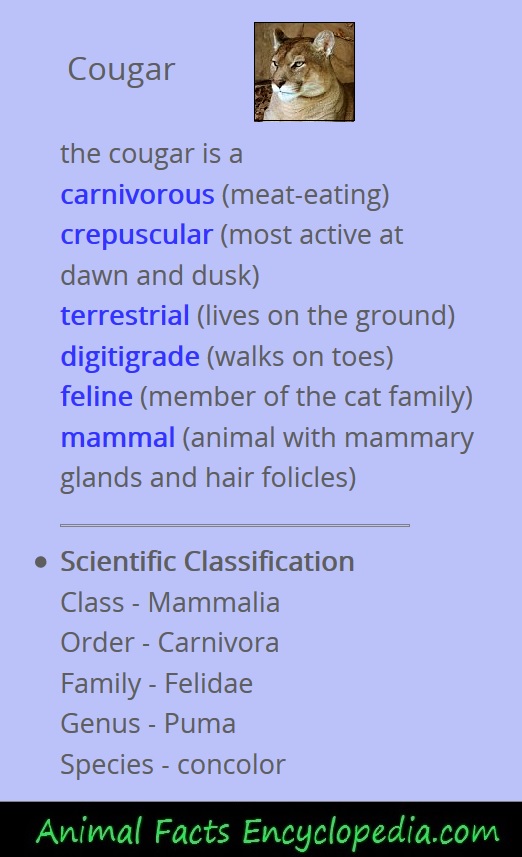
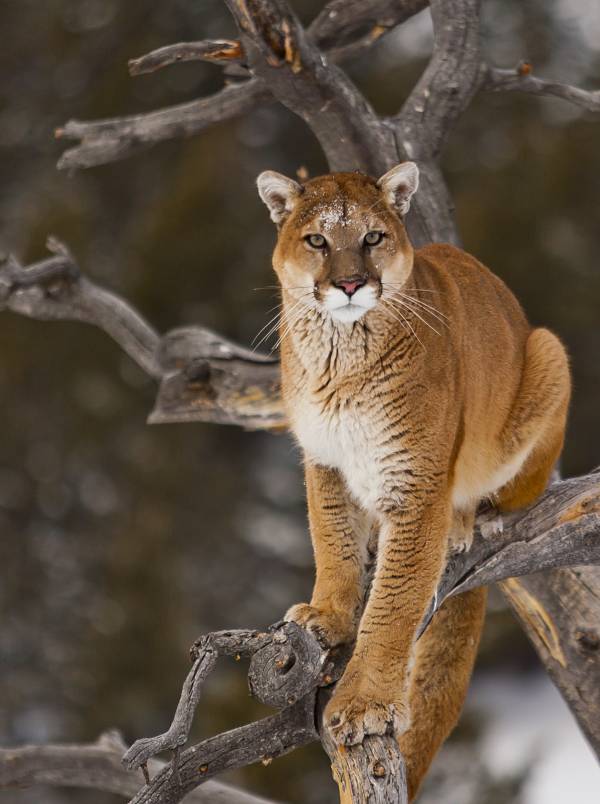
Cougars can be a menace for cattle ranchers and can easily take down a full grown cow.
Because of this, they have been tracked down and hunted out of existence across many square miles of range land.
But they are not endangered, except for the very rare Florida panther sub-species, and many cougars live in remarkably close proximity to human beings without us even knowing they are there.
Spotting
a mountain lion in the wild is extremely rare, but hikers often find
clues of their presence like scat, recent kills, and scratches left on
trees.
Cougar attacks on humans do occur, but are very rare, in fact, less than 30 people have ever been reported as being killed by mountain lions

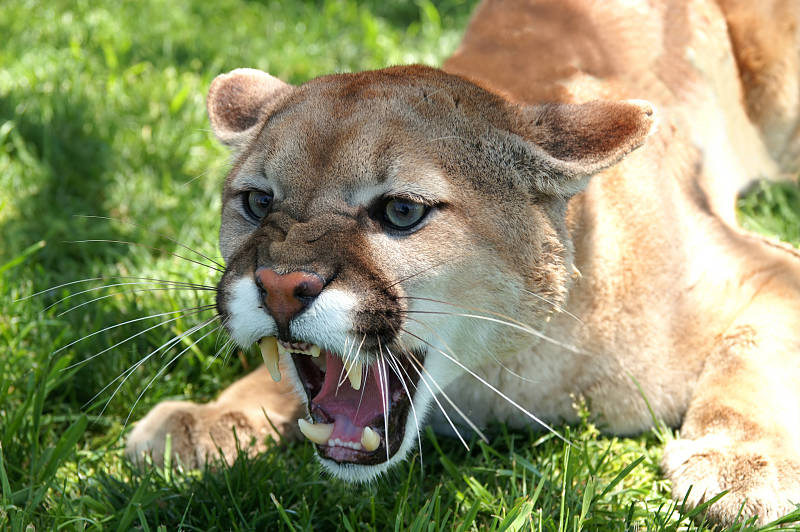
a few more cougar facts
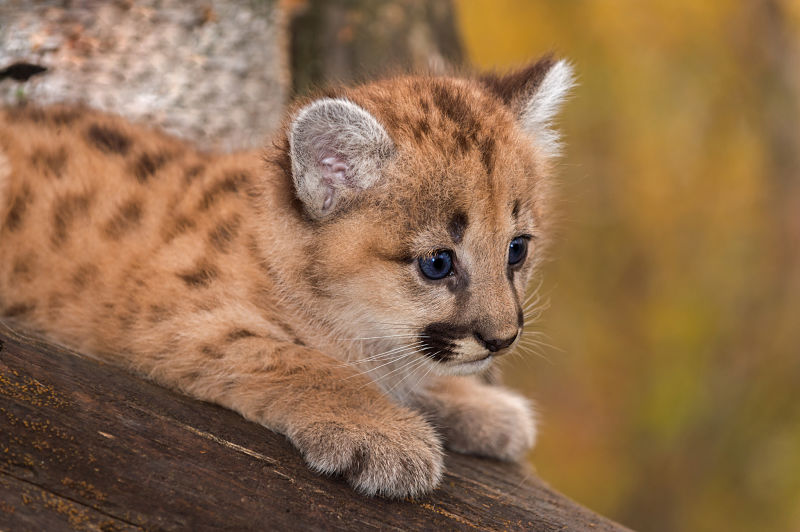
- The cougar, mountain lion, and puma are all the same animal
- Cougars have about a 12 to 18 year lifespan
- Male cougars are much larger than females
- Males are 130 to 260 pounds
- Females are 80 to 160 pounds
- The average male cougar is larger than the average African leopard
- Cougars are not considered "big cats" because they do not roar
see more animal extreme closeups
Recent Articles
-
African Animals - Animal Facts Encyclopedia
Oct 11, 16 10:27 PM
African Animals facts photos and videos..Africa is a wonderland for animal lovers, and a schoolroom for anyone who wants to learn about nature, beauty and the rhythm of life -
Baboon Facts - Animal Facts Encyclopedia
Oct 11, 16 10:26 PM
Baboon facts, photos, videos and information - Baboons are very distinctive looking monkeys with long, dog-like snouts and close set eyes. -
Great Apes Facts - Animal Facts Encyclopedia
Oct 11, 16 10:25 PM
Great apes facts, photos and videos..Human beings did not evolve from chimpanzees, modern chimps and gorillas do not appear in the fossil records until much more recently than homo sapiens..




















